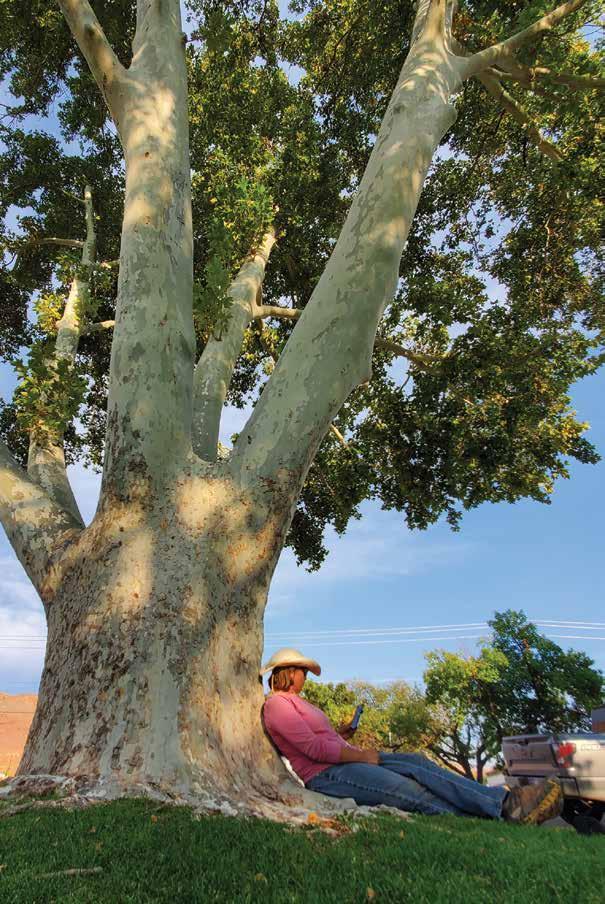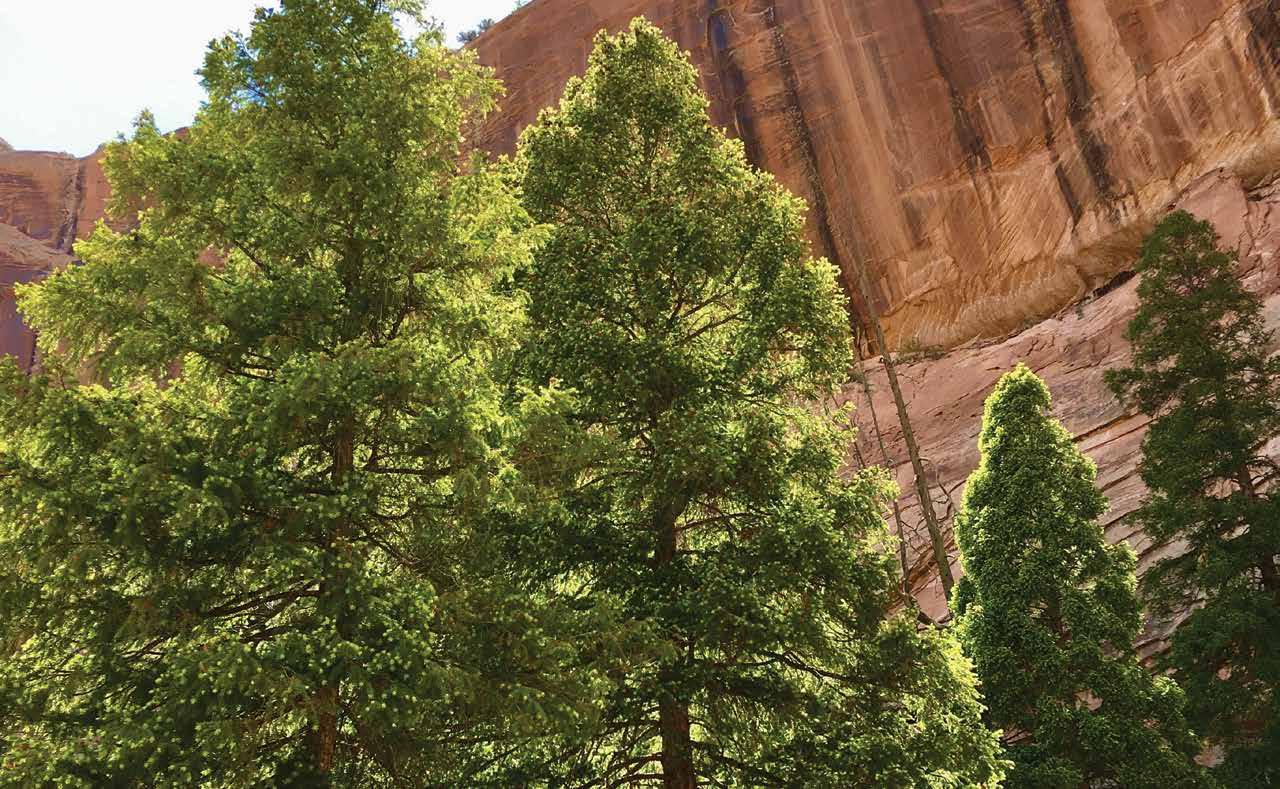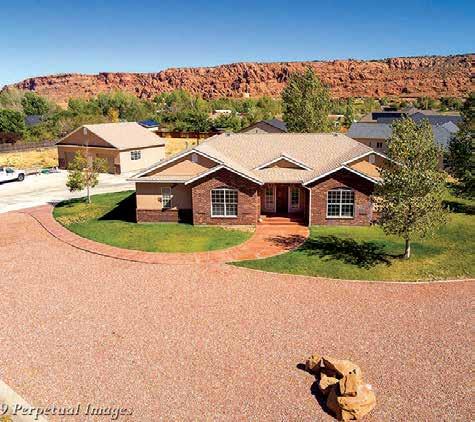
10 minute read
Moab’s marvelous trees
LARGE CORNER LOT WITH CUSTOM BRICK HOME 4 Bed | 2 Bath | 2,172 Sq. Ft. | 0.53 Acre MLS#1635511 | $614,900 Lenore Beeson – 435.260.2135
SUNFLOWER HILL LUXURY BED & BREAKFAST! 12 Rooms | Innkeeper’s Unit | Solar | 1.46 Acres 10.5% Cap Rate | Water Shares | MLS#1593287 | $2,900,000 Becky Wells – 435.260.2842
Advertisement
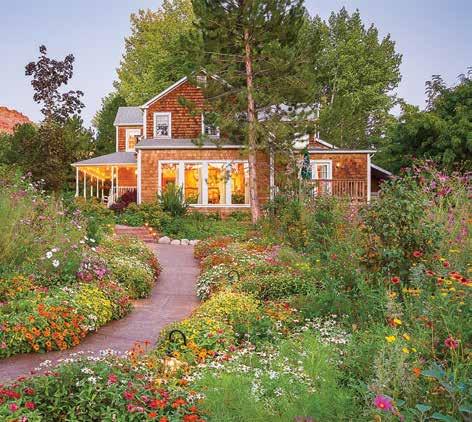
NIGHTLY RENTAL!
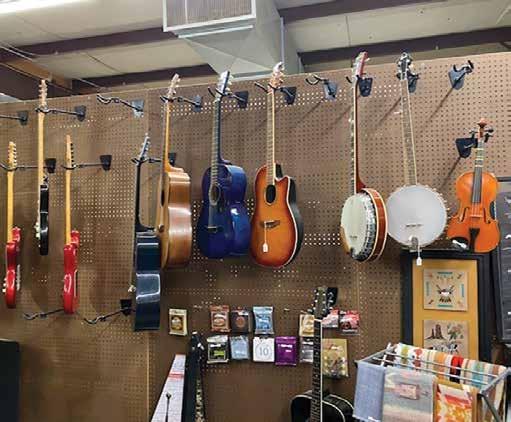
WELL ESTABLISHED LOCAL PAWN SHOP! Business & Inventory Only MLS#1699958 | $52,755 Heidi Blake – 435.260.8185
DOWNTOWN ACREAGE WITH 3 HOMES & SHOP 3 Bed | 3 Bath | 1,463 Sq. Ft. | 2.03 Acre | R3 Zoned MLS#1699962 | $1,250,000 Becky Wells – 435.260.2842
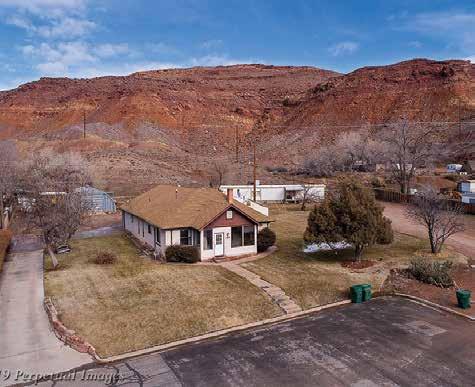
TURN KEY RIM VILLAGE INVESTMENT OPPORTUNITY! 3 Bed | 2 Bath | 1,573 Sq. Ft. MLS#1624926 | $419,000 Becky Wells – 435.260.2842 & Curtis Wells – 435.210.4366
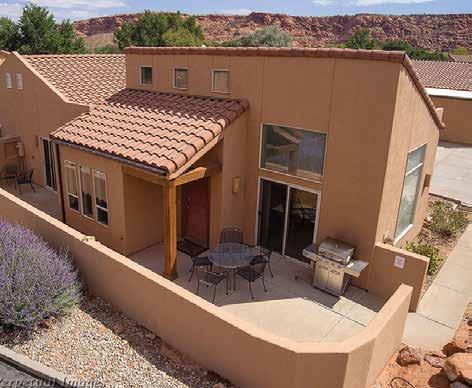
YOUR HOME AWAY FROM HOME AT THE GONZO INN! 2 Bed | 2 Bath | 909 Sq. Ft. | 2 Adjoining Rooms MLS#1621660 | $379,000 Kali Bisco – 435.260.9906
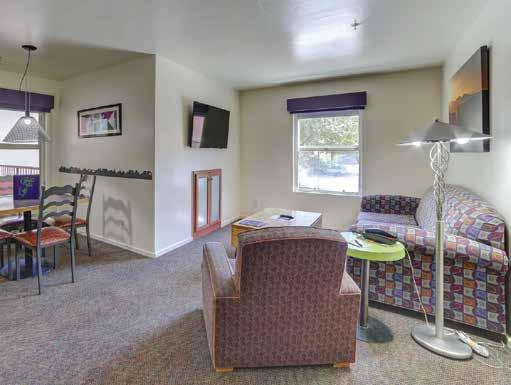
C-5 ZONING!
IDYLLIC ACREAGE WITH MASSIVE POTENTIAL 120 Acres | Raw Land | San Juan County MLS#1556357 | $98,000 Sue Shrewsbury – 435.260.1479 & Heidi Blake – 435.260.8185
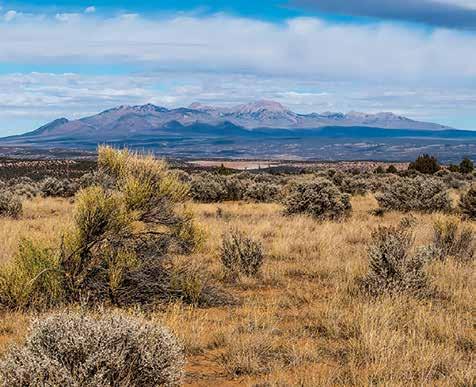
SOLD #1
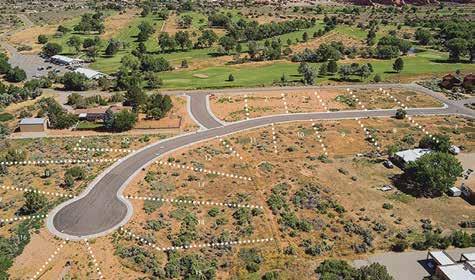
SOLD #2 SOLD #3 SOLD #4 SOLD #5 SOLD #6 HIGHWAY COMMERCIAL DEVELOPMENT OPPORTUNITY
Home: 3 Bed | 2 Bath | 1,568 Sq. Ft. | 2,901 Sq., Ft, Shop 0.60 Acre | MLS#1636837 | $599,000 Heidi Blake – 435.260.8185
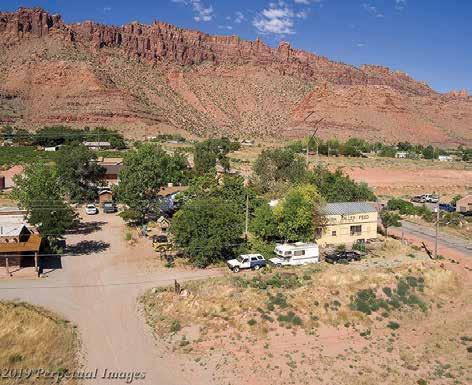
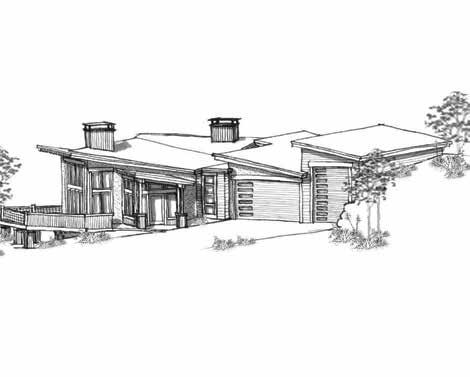
UNDER CONSTRUCTION!
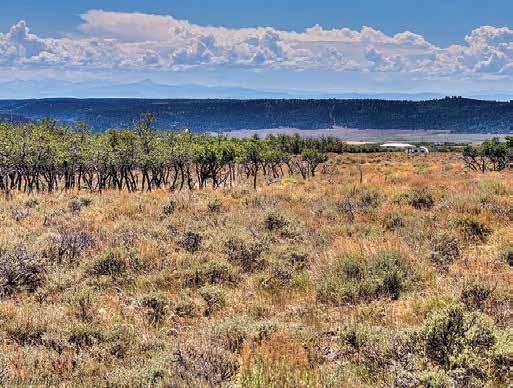
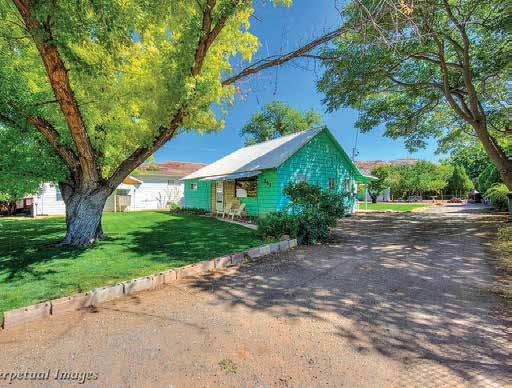
RARE PIECE OF MOAB WITH IMMENSE POTENTIAL! 2 Bed | 1 Bath | 864 Sq. Ft. | 0.28 Acre | C-5 Zoned! MLS#1631040 | $359,000 Heidi Blake – 435.260.8185
WATCHMAN ESTATES
Adjacent to the Moab Golf Club Lots Starting at $119,000 Becky Wells – 435.260.2842 & Curtis Wells – 435.210.4366
NEW CONSTRUCTION TUCKED INTO THE EDGE
OF THE SLICKROCK – 3 Bed | 4 Bath | 2,822 Sq. Ft. 1.36 Acres | MLS#1633114 | $989,000 Becky Wells – 435.260.2842 & Curtis Wells – 435.210.4366
STELLAR VIEWS OF THE LA SAL MOUNTAINS
4.80 Acres | Utilities Available | Old La Sal MLS#1699837 | $89,999 Lenore Beeson – 435.260.2135
MOAB’S MARVELOUS TREES Playing a key role in manmade and natural landscapes — and giving clues to local history

Written by Rachel Fixsen
STROLLING ALONG THE SHADED BIKE PATH OR ENJOYING ONE OF MOAB’S WOODED PARKS, ONE MIGHT FORGET THAT THE TOWN IS SURROUNDED BY SWEEPING ARID LANDSCAPES. THE GREENERY IN MOAB IS AN OASIS NESTLED BETWEEN RIMS OF RED ROCK SPARSELY STUDDED WITH DESERT TREES. A CLOSER LOOK AT SOME OF MOAB’S TREES GIVES A PEEK INTO THE AREA’S PAST.

Desert Willow
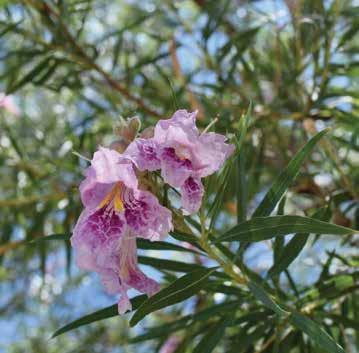
COMMON LOCAL TREES
Common species seen in the valley include cottonwood, elm, and mulberry. Of these, only the cottonwood is native.
“Elms and cottonwoods are both riparian, meaning they grow near rivers and streams,” explains Matt McEttrick, project assistant for Rim to Rim Restoration, a Moab organization dedicated to ecological restoration. “They’re adapted to these areas that can be high flow.” In Moab, high water-flow areas include Mill Creek, Pack Creek, and the Colorado River, but could also include irrigated landscapes.
Both elms and cottonwoods, McEttrick says, improve their chances of regeneration by producing lots and lots of seeds. Cottonwood seeds are surrounded by a white, cottony fluff that floats on the wind and can pile up in drifts during the fruiting season. Elms produce samaras, or winged seeds, also dispersed by wind.
“The elms produce more seeds for longer; cottonwoods are really lined up with when the river historically floods,” McEttrick says, noting that this advantage means the introduced elms can often out-compete their native peers.
Elms are sometimes deliberately used in landscaping. “They’re good shade trees, but their branches tend to be brittle and break off,” says McEttrick, adding that while Rim to Rim sometimes removes elm trees in restoration projects, they mainly target Russian olive and tamarisk trees, both introduced and invasive species that make significant changes to natural ecosystems.
Other trees frequently planted in local landscaping include desert willow, locust and ash.
Mulberry trees are also prevalent in Moab yards and corners of untended woods. Mulberry trees were popular across Utah among Mormon settlers, who planted them to farm silk worms, which feed on the leaves. Brigham Young, a prominent Mormon leader in the nineteenth century, imported thousands of mulberry trees from Europe in the 1860s, and soon after, Utah began producing homegrown silk from their farmed worms. The industry didn’t last, but the trees remained popular, in part because they’re fast-growing and they produce a sweet berry.
Locust tree
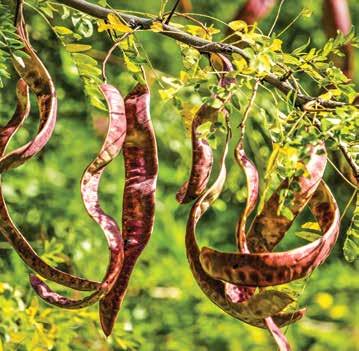
Russian Olive (invasive)
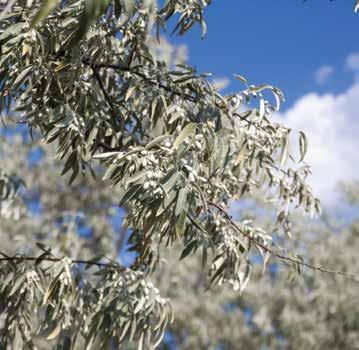
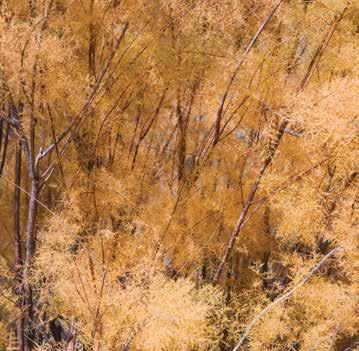
A legacy of Moab’s fruit-growing past — an orchard producing nectarines, apples, pears and plums thrives on the land of a Moab homeowner. [Photo by Murice D. Miller]
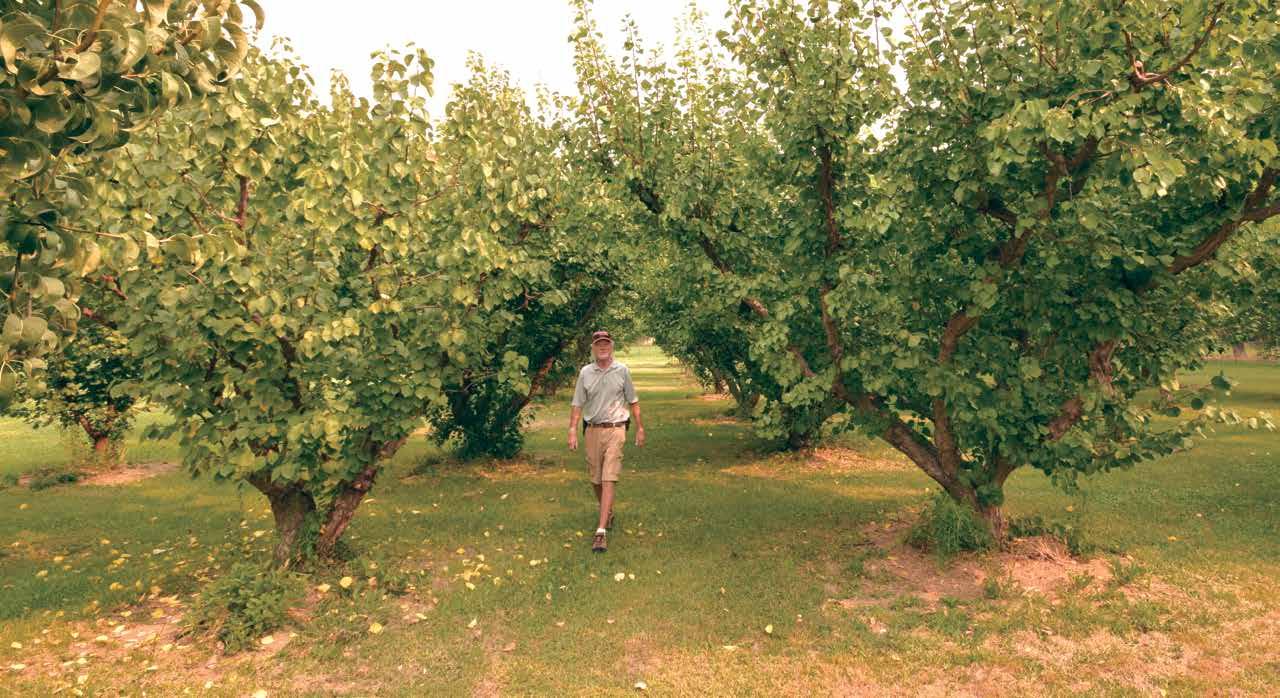
HISTORIC FRUITS
Nectarines, apples, pears and plums swell on the branch in a 180-tree mixed fruit orchard tucked away on a large property near the edge of town. The plums are deep purple and coated with a dusky bloom, and the nectarines smell like tart, sweet candy.
Grand County was once wellknown for its fruit production. In his book “A History of Grand County,” Richard A. Firmage cites documents from the turn of the century describing Moab-area produce winning regional awards and Grand County crops being exported to as far away as England. “The apples of Moab are without doubt the juiciest and the most delicious in the world,” boasts a pamphlet published by the Denver and Rio Grande Railroad, which served Grand County, in roughly 1910. By the 1950s agriculture in the region had declined, and the uranium boom eclipsed farming as the primary local economy. But many of the orchards remained for decades after.
“Even back in the ’60s it was a fruit town,” says Andrew Riley, who moved to the Moab area in the 1970s. Riley purchased property along Powerhouse Lane in Moab at a low point in the local economy, after the uranium mining industry abruptly crashed in the 1980s. The property hosted a mobile home park, which supported Riley when the town began to revive and artists, writers and other “eclectic types” began to move in. As a side operation, Riley planted a mixed orchard with apricots, peaches, plums, nectarines and apples.
“I saw the open fields there, and they had irrigation water, and I thought, ‘Oh boy, I’m going to grow some fruit trees,’” he remembers. He had been a vegetable farmer in California before moving to Moab.

The orchard in Moab wasn’t a main source of income, however.
Riley later developed housing on the Powerhouse Lane property, and caring for the fruit trees fell by the wayside. But about ten years ago, another landowner in town was putting in an orchard, and asked Riley if he could transplant some of the Powerhouse trees. The trees were large and mature and difficult to relocate, but Riley points out some gnarled and weathered individuals, still bearing fruit, that took to their new home after being uprooted and moved, both from his property on Powerhouse Lane and from another old Moab orchard across from Grand County High School. In the early years of the fledgling orchard, the landowner asked Riley for some tree-care advice, and ended up offering him a job managing the orchard. Riley enjoyed the work, nursing the trees with special supplements and non-toxic pesticides, pruning the treetops, removing the old and dead, and planting replacement saplings. He says the Moab area is a great place for fruit trees, with soils rich from silts deposited by Colorado River flood events bringing minerals down from the Rocky Mountains. “You put them in these beautiful bottom-lands soils, and you’ve got the Millcreek irrigation water—beautiful, pure, really wonderful stuff,” Riley says. The quantity and flavor of the fruit bears out the claim.
Riley is now retired from managing the orchard, but he still pops by to see how the trees are doing, offer advice, and harvest some fruit.
THE BIG TREE
Fremont cottonwood trees, native to Utah and the American West, sink their roots into stream channels and moist valley bottoms and quickly grow wide leafy canopies and girthy trunks and limbs. According to a Utah State University Extension web page on the tree, they often reach 48 inches in diameter at the base and average about 70 feet tall.
“They’re an awesome tree,” says David Olsen, who used to be the urban forester for the City of Moab. “They have this form to them that’s just unusual... most of the cottonwoods you buy in a store would be a ‘lollipop,’ where these ones have a lot of character in the branch structure. When they lose all their leaves they kind of look like a spooky tree a little bit—a Halloween-type tree.”
Moab city streets and parks harbor a wealth of trees, and Olsen can recount the histories of many of them. He helped craft an ordinance in the 1990s that required land developers to plant trees along city right-of-ways, and he can point out shady walks and lush landscapes that were planted to meet that requirement. He remembers leading boy scout troops and youth sports teams in tree planting projects, and pointed out two large poplars in Swanny City Park that he calls “McDonald’s and Wendy’s violation trees”: trees the businesses were compelled to purchase in compensation for trees they illegally removed near their businesses.
One particular cottonwood tree looms large in the memories of many Moabites: known as “The Big Tree,” it presided over the street on 100 South for decades before it began to lean over in a slow succumbing to age and gravity, and city work crews had to take it down in 2000. Jim Stiles, in his book “Brave New West” about the evolution of Moab, mourned the tree’s demise: “I had passed beneath these branches, had appreciated its coolness on a hot summer day, had marveled at the translucent light that filtered through its leaves in the late afternoon, countless times,” he wrote.
The Big Tree itself is gone, but Olsen saved small cuttings, about six inches tall, from the spent cottonwood and replanted a few in town. Just under 20 years later, those humble cuttings are now big thriving trees. One overlooks the lawn at Rotary Park; another casts a wide circle of shade over what is now the Bark Park.
“It was a tiny little baby, and I just kept it at City Hall for a little while, just watching it, and then planted it here,” Olsen recalls. The Big Tree’s children don’t reach quite the same majesty of their parent, but people and pets still enjoy their shade and company.
The original Big Tree, Olsen speculates, was probably planted by Randolph A. Stewart, a Mormon settler who arrived in Moab in the 1880s. A historic cabin in downtown Moab is thought to have been built by Stewart; he also grew orchards and there is a local peach variety named after him. But the trees he planted in public areas may be his most lasting legacy to the Moab community.
Other notable local cottonwoods include a spectacular specimen with huge sprawling limbs at the entrance to Moonflower Canyon, and an ancient behemoth at the entrance to Castle Valley, with one of the largest trunk circumferences in the region.
A giant Fremont cottonwood near the town of Castle Valley. [Photo by Murice D. Miller]
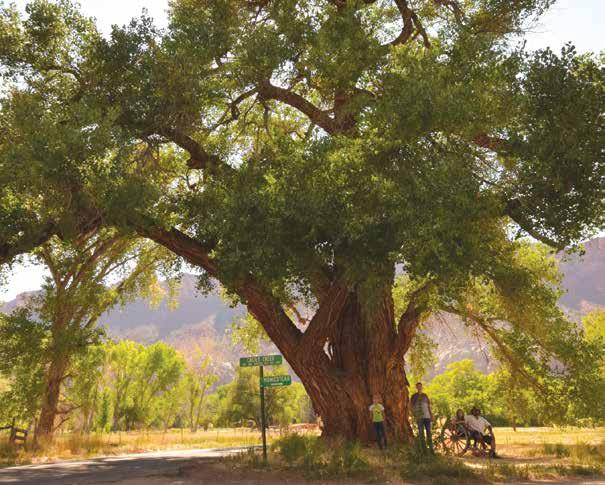
With its smooth trunk and large, leafy canopy, a mature sycamore offers a park-goer a tranquil place to sit in Moab’s Swanny Park. [Photo by Andrew Mirrington]
